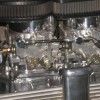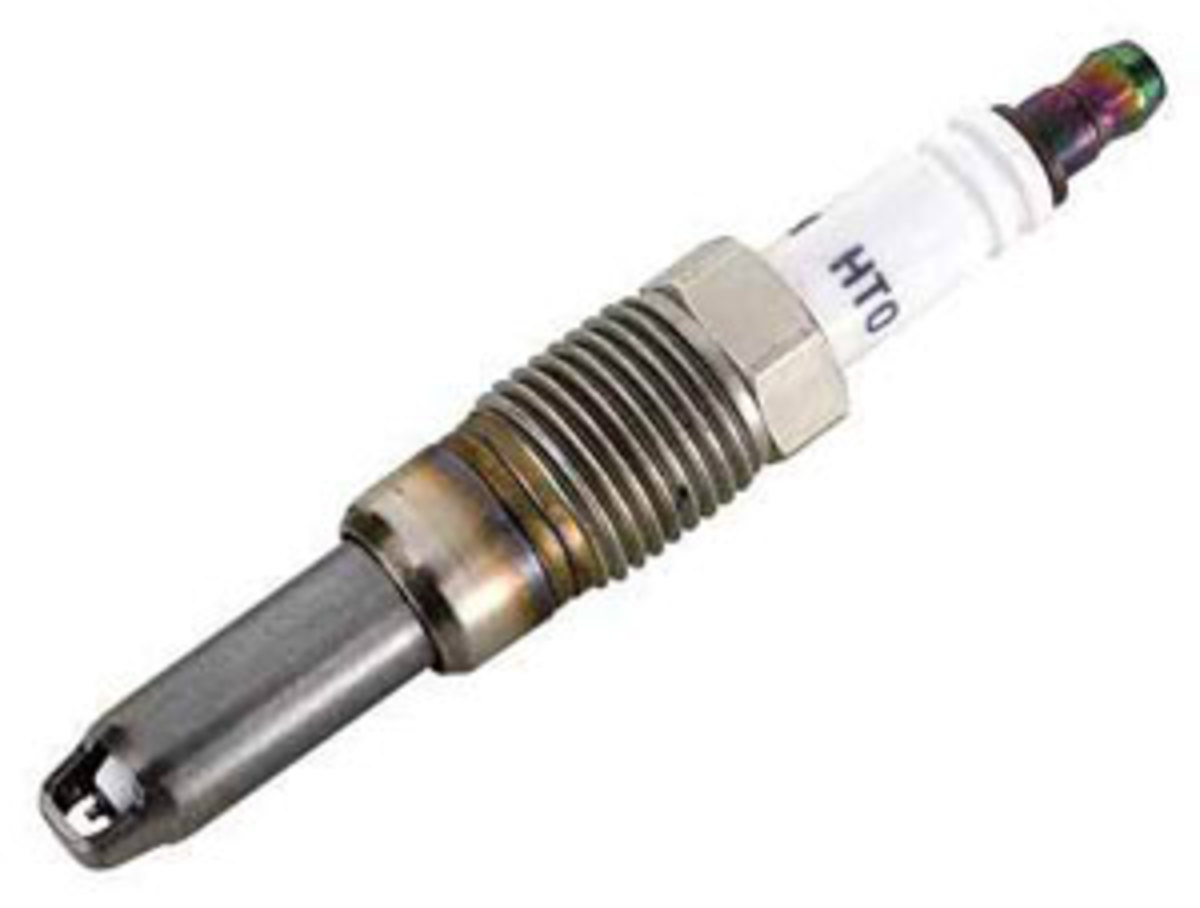Fuel injector cleaning services have great benefits
Run Rite fuel system cleaner
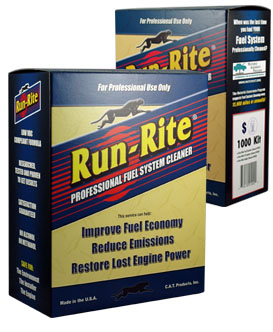
Services are everywhere
If you've been anywhere near a auto repair facility, you might have noticed some kind of a special service being offered for an exclusive price. One of the most popular is the fuel system service. This is sometimes referred to as a fuel injector cleaning. Prices can range from $59.95 to $249.95. Even at gas stations and auto part stores, you might see products advertised as additives designed to clean injectors. So why does everyone seem to want your money to clean injectors? Let's start with a quick lesson on what fuel injection is and why it's important.
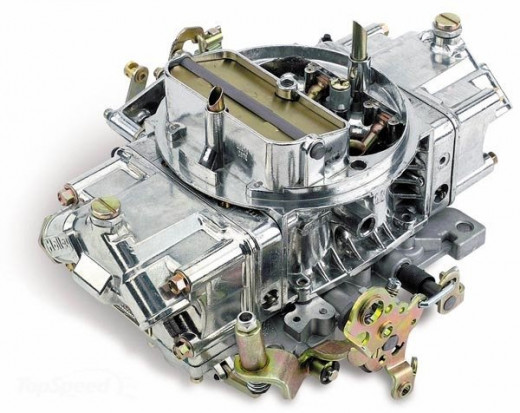
Combustion is key
Ever since the development of the combustion engine, fuel delivery has been the key factor in making an engine run. To create power in an engine, fuel and air have to be mixed as a vapor and then ignited. The mixing to create a vapor is really what it's all about. Raw, liquid fuel may burn, but it doesn't 'pop'. Clearly, air by itself won't burn, but if you blow on hot coals it increases the intensity of the heat. For good solid power in an engine, there has to be controlled explosions. This generates the energy that turns the crankshaft, which in turn drives the transmission, which turns the driveshaft and out to the wheels. It all starts with the explosion.
So on the first engines, a carburetor was installed on top of an intake manifold that sits directly above the cylinders. A fuel pump pushed fuel through jets on the carb. The jets sprayed the fuel kind of like the spray nozzle on a squirt bottle. The engine creates a vacuum by rotating a piston down inside a cylinder. Very similar to drawing fluid in a syringe. This pulls air through the carb and the sprayed fuel, into the intake manifold. The manifold is like a great hall with doors to 4, 6 or 8 rooms. These rooms are the cylinders. The doors are valves. The valves open and close in correspondence with the pistons' position in the cylinder. When the piston is drawn down, the intake valve opens and allows the mixed fuel and air in the manifold to rush into the cylinder. Then the valve closes to trap the air and fuel into the room. This is where the spark plug and timing come into play. If the spark plug sparks now, combustion will occur but the piston would be in the wrong position and there really wouldn't be much power in the 'pop'. So the vehicle is timed so that after the valve closes, the piston rises up in the cylinder and compresses the fuel and air. When the piston reaches the top of it's travel, then the spark plug ignites the mixture. The ensuing explosion has more energy because it was compressed, and energy is effectively used to drive the piston down which turns the crankshaft. We'll save information on timing and connected parts for another hub. For now we'll focus on what happens on just one cylinder.
Diesel engines work very similarly, but instead of a spark creating combustion, it uses heat and compression. That's why a diesel engine has glow plugs that heat the cylinder up. Once the atomized diesel fuel and air are compressed tightly in the hot, sealed cylinder, 'BANG', it just pops. Drawback is, diesel is more likely to gel when cold. That's why there are even more cold weather additives for diesels that are offered on the market. Fuel gelled in an injector is not good.
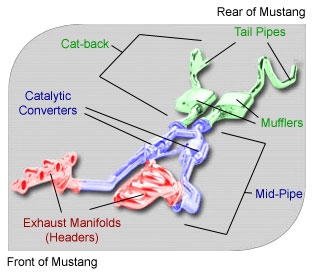
After the burn
So we've covered all the cool stuff about mixing fuel and air to create powerful, controlled explosions in the engine. As we all know, when you burn something, smoke is a by-product. So after the explosion occurs, the cylinder is full of 'smoke' that is pushed out of another door that opens. This door is the exhaust valve. The 'smoke' pushes out of the cylinder and down through a tube and out into the open air. All done, right? Well, if we want a cleaner world, we need to eliminate some of those by-products in the exhaust. A lot of that is done through special parts installed in the exhaust system, like the catalytic converter and the exhaust gas recirculation. I will write more on these later. These are major contributors to check engine lights.
Other than controlling elements of the exhaust directly, manufacturers began to realize that if fuel could be burnt more efficiently, there would be less waste. Less waste means less tailpipe emissions. This led to the development of electronic fuel injection. Electronic fuel injection, or EFI, eliminates the old fashioned carburetor and sprays fuel directly into the air intake manifold in precise amounts through fuel injectors. The system is controlled by an electronic module that takes in a wide variety of readings, such as temperature, humidity and barometric pressure and a few other things. All this information allows for a more precise amount of fuel and air to be mixed efficiently for a proper burn. A more measured burn creates a lot less waste, which means a lot less smoke out of the tailpipe.
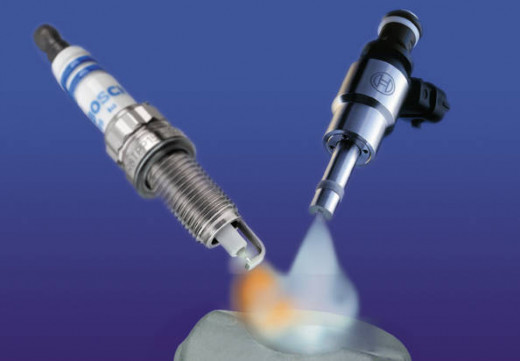
Electronic fuel injection means a better burn
The development of electronic fuel injection has led to incredible developments of power and efficiency. The horsepower and torque ratings on an engine used to be based on the size of the engine. I think everyone is familiar with the terms of a 'big block' or 'small block' engines. These engines are now primarily used in race applications because fuel efficiency and pollution aren't as much of a concern as just producing raw power with a high-rev engine. These engines are the old 8 and 6 cylinder engines. While these engines are still used in a few modern applications, most everyone is more familiar with the 4 cylinder engine. This engine was not feasible with the old carburetor system. However, EFI has made the 4 cylinder the most popular engine on the market now. A modern 4 cylinder engine with EFI can produce similar torque and horsepower ratings as the old engines. A smaller engine is less weight and burns less fuel which automatically makes it better on fuel. Modern electronics makes a fuel injector turn a modern engine into whatever you need it to be. Good on gas?. You got it! Strong acceleration when starting from a stop? No problem! Need that extra pep to pass? Electronic fuel injection has you covered! Top it all off with a cleaner burning system with fewer emissions, and you've got all the reasons fuel injection makes the modern car possible.
So the next time you see an opportunity to clean your injectors, think about what they do for you. Then you can decide for yourself if you think it's worth it.
